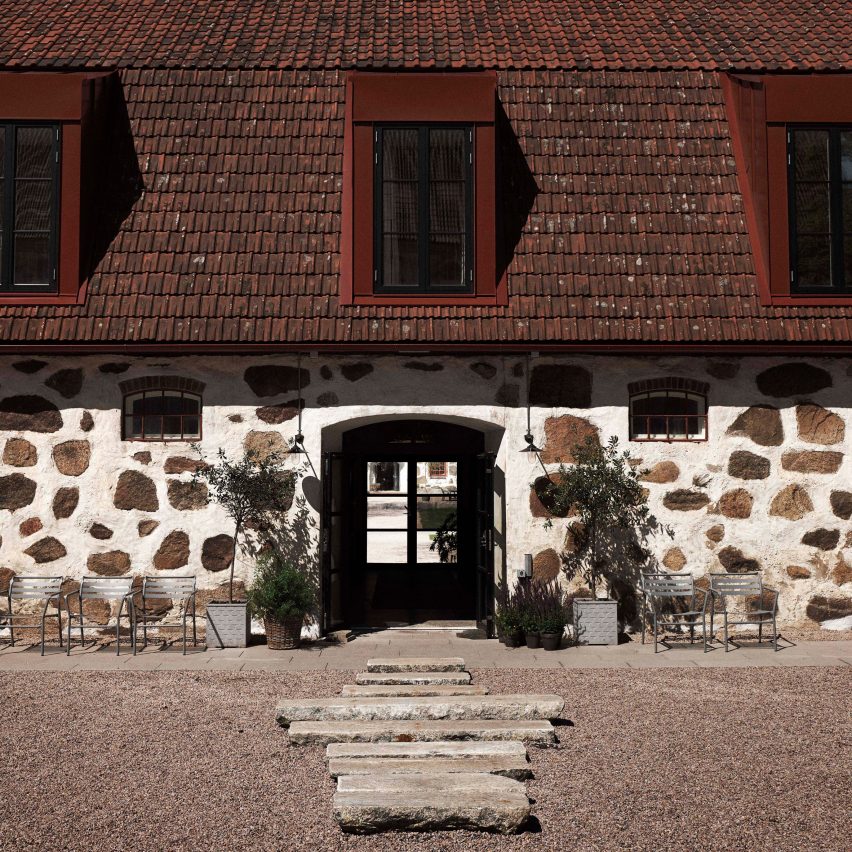
A pair of stone barns on a castle estate in southwest Sweden have been turned into a boutique hotel and restaurant with interiors designed by Kristina Wachtmeister.
The two low stone buildings face each other across a gravel path and area of grass at the centre of the 15th-century Wanås estate and organic farm, 70 miles north-east of Malmö.
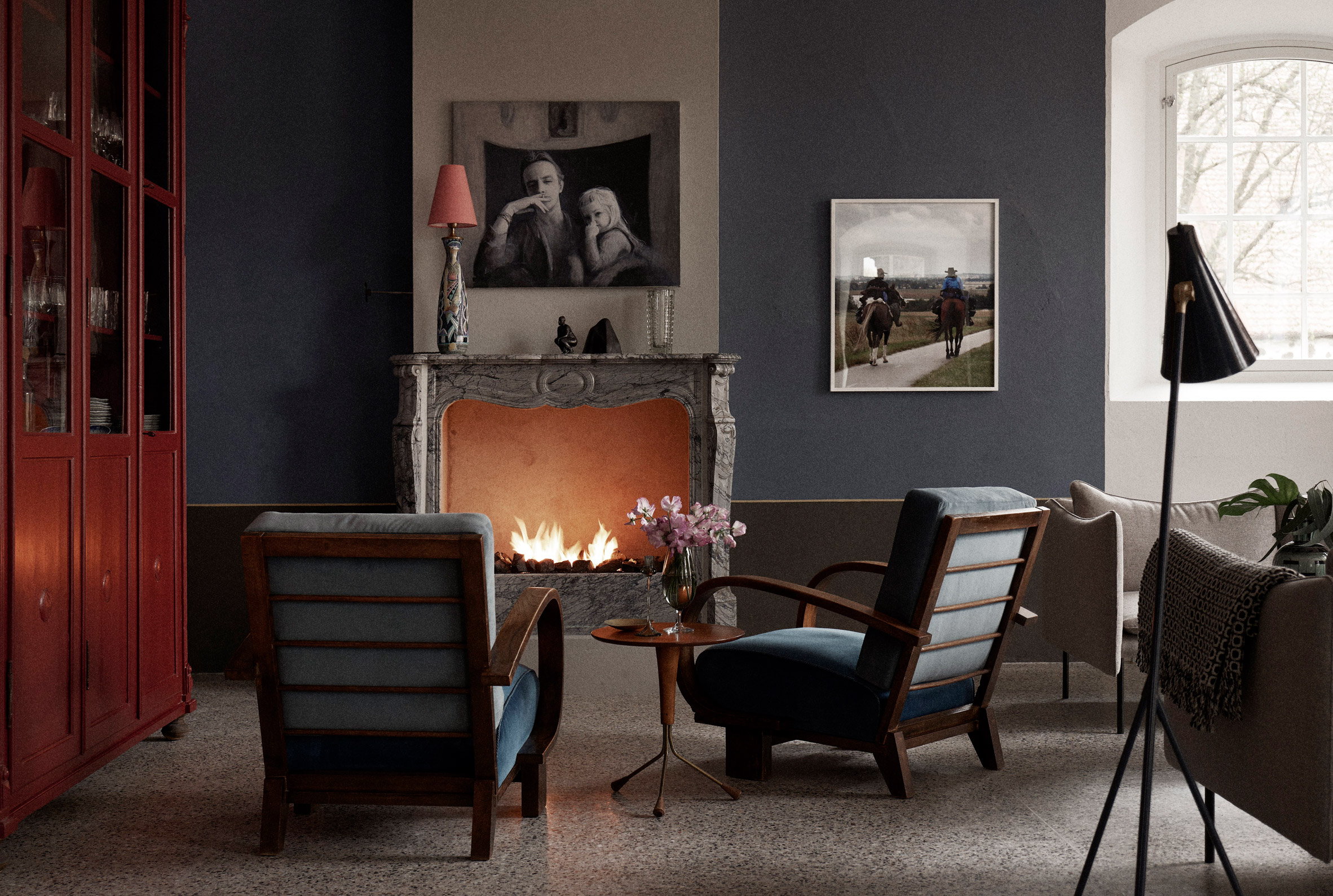
The hotel is housed in the former stables, with 11 bedrooms spread between the ground and first floor. The original walls of the stables are a metre thick.
"I wanted to make it cosy and nice as these walls can be very cold sometimes," explained architect Kristina Wachtmeister, who is married to the owner of the estate and lives in a wing of the castle with their children.
"We aimed to keep it as much as possible like it is now and then add on the cosy elements."
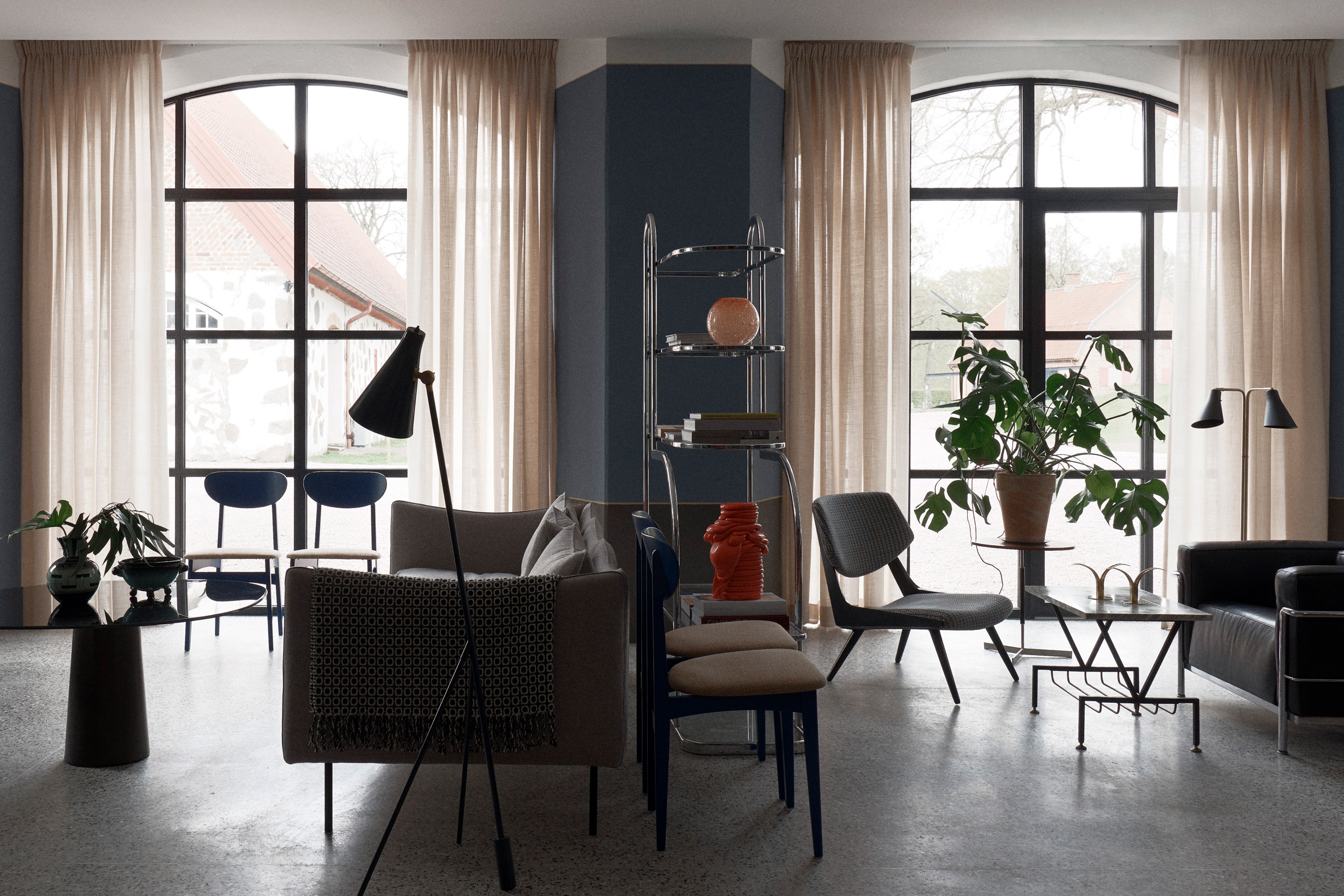
On the ground floor, guests can relax in a communal lounge area, with chalky blue walls, a table and chairs for working at, a bar modelled on a domestic kitchen, and a seating area with sofas and armchairs.
Wachtmeister wanted the communal lounge area to feel as if the guests were in their own home. She looked for furniture in the attic of the castle, where she found a mixture of 1970s and 1980s pieces that were used to decorate the space.
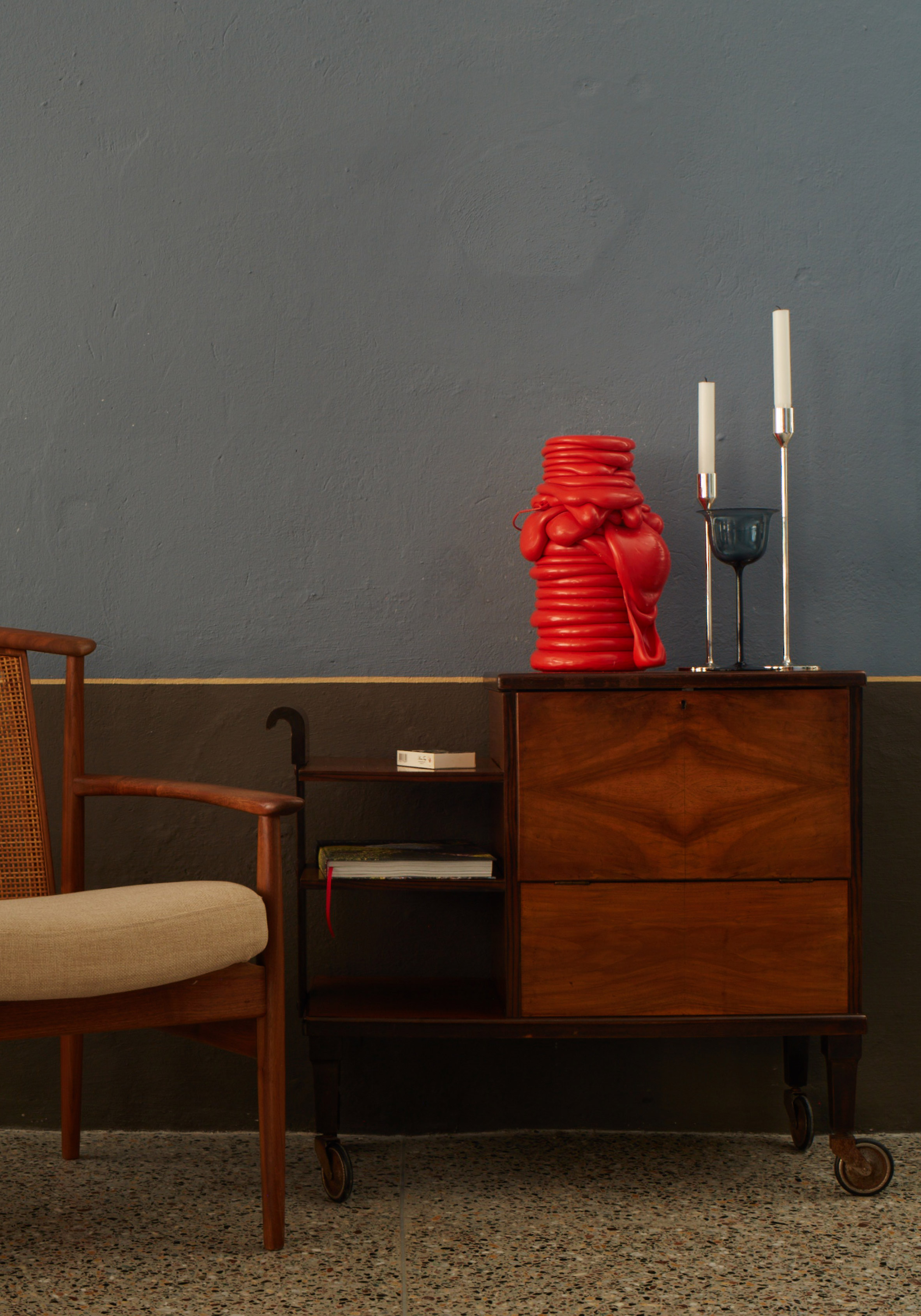
The items found in the attic are mixed in with pieces bought at auction and new furnishings bought from mostly Scandinavian designers, such as sofas from Fogia. The floors are laid with terrazzo.
"There weren't the things you would expect, but when you add old things with new things the mixture is actually very nice," explained Wachmeister. "You cannot really see that it is from whenever you did the renovation, so I wanted to have that same feeling here."
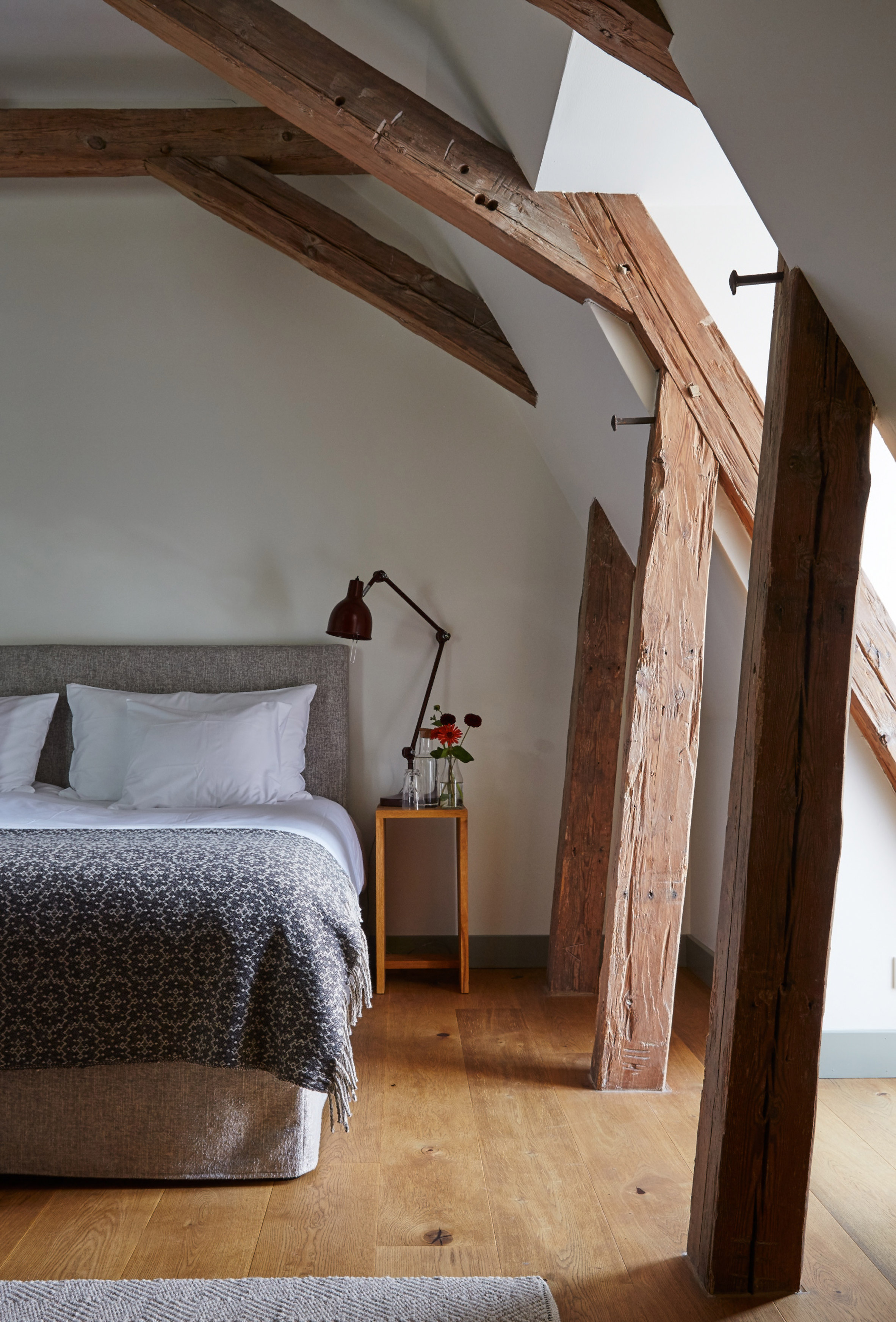
Wanås estate also has a gallery and sculpture park. The art on the hotel walls is mostly by artists who have contributed to the sculpture park, including an orange sculpture on the sideboard by the American artist Roxy Paine.
In the guest bedrooms, Wachmeister has developed a pared-back Scandinavian style that takes advantage of the original wooden beams.
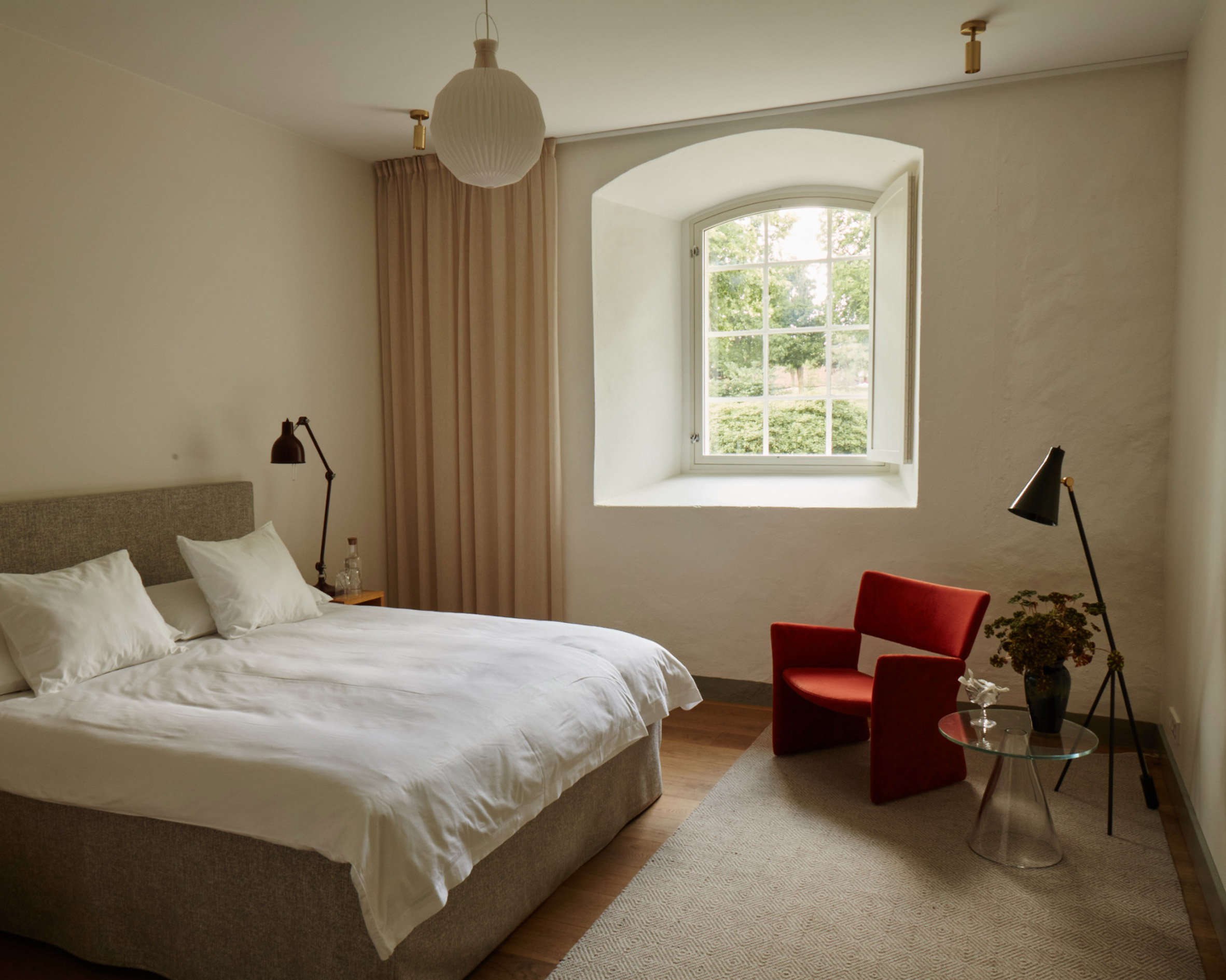
"The walls in the bedroom are white and it's quite simple – people stay one to three days at the most, it's a weekend place. So the shape of the wardrobe is very simple, made from oak and leather from our cows when they can't milk anymore," explained Wachmeister.
Flooring is made from oak taken from the estate, while the bathrooms have been completed in local limestone.
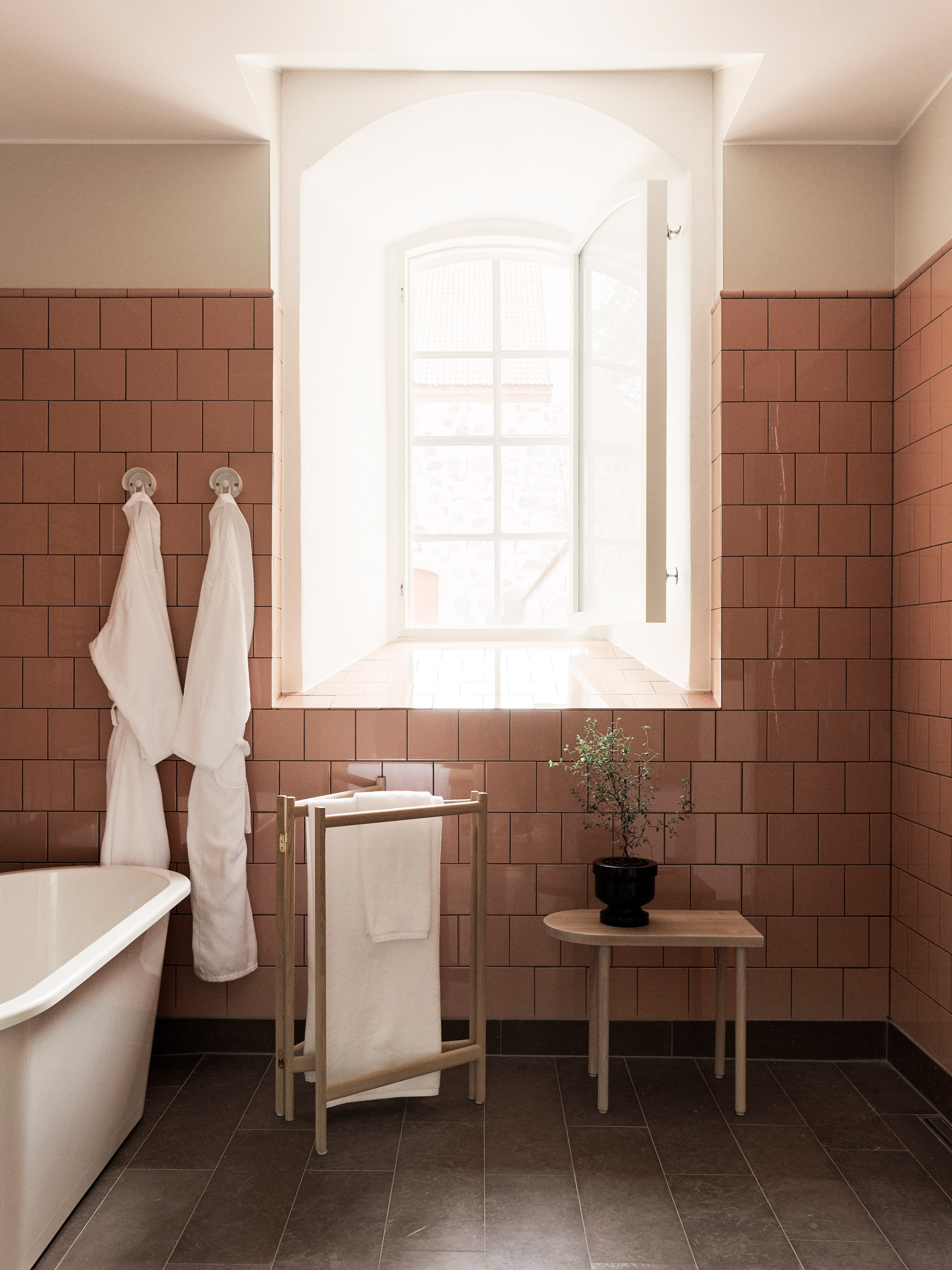
"I wanted to use as much material from the farm and the surroundings as possible," said Wachmeister. "Also the buildings are listed so we couldn't do exactly what we wanted to do, but it's good to have a frame sometimes."
Beds and lights are from Swedish brand Rubn, whilst baths by are by Ifö and some furniture is specially designed by Christian Halleröd Design.
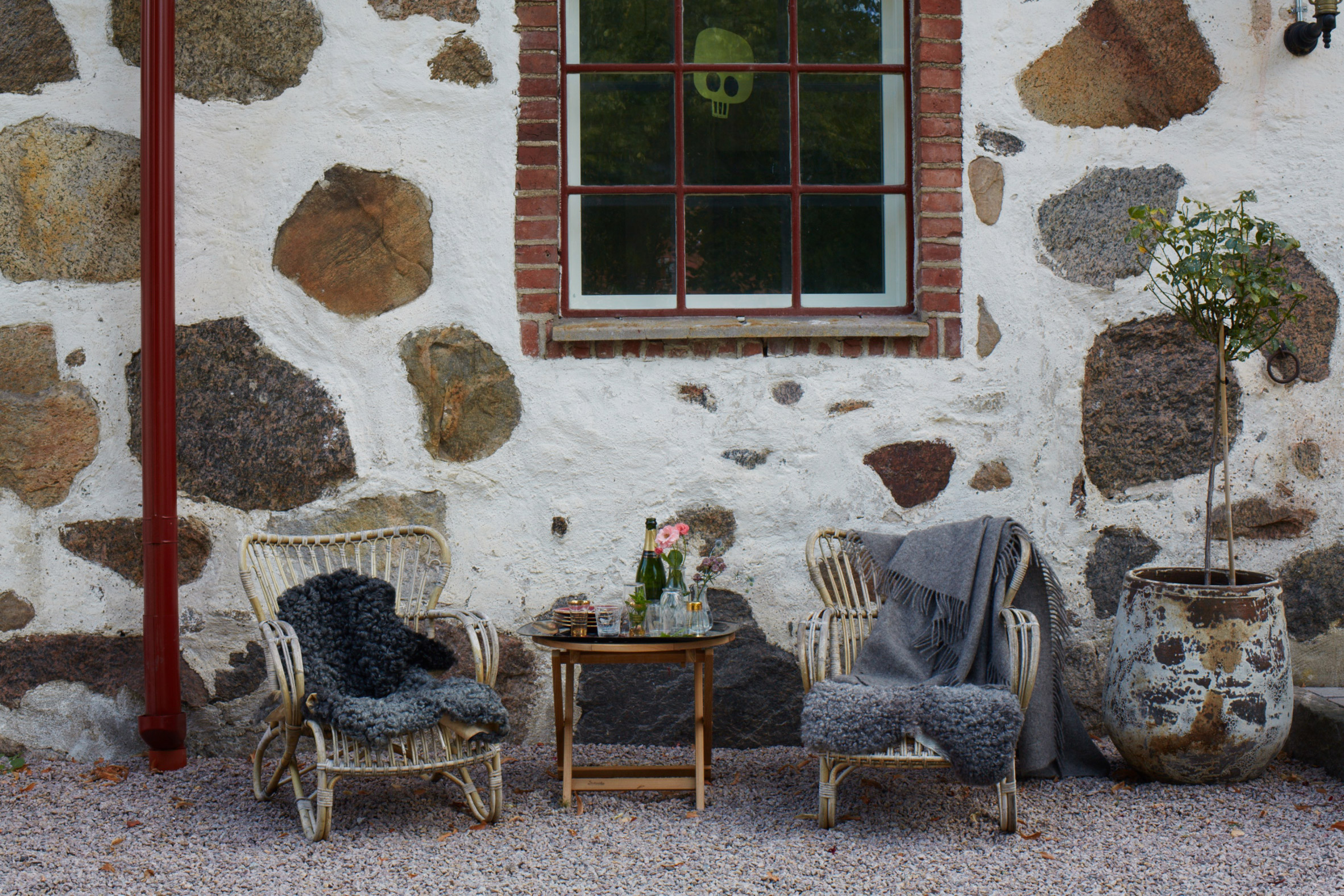
In the opposite barn, which used to house cows, Wachmeister has created an open-kitchen restaurant with a seasonal menu that uses ingredients grown on the estate's grounds.
The original stone walls of the dining space are painted white, complemented by wooden tables from Blå Station and chairs from Gärsnäs covered in leather from the estate that has been tanned to a deep red colour.
An open fire sits at the heart of the restaurant, whilst upstairs there are conference facilities for larger groups with tables and chairs that can be reconfigured for presentations or meetings.
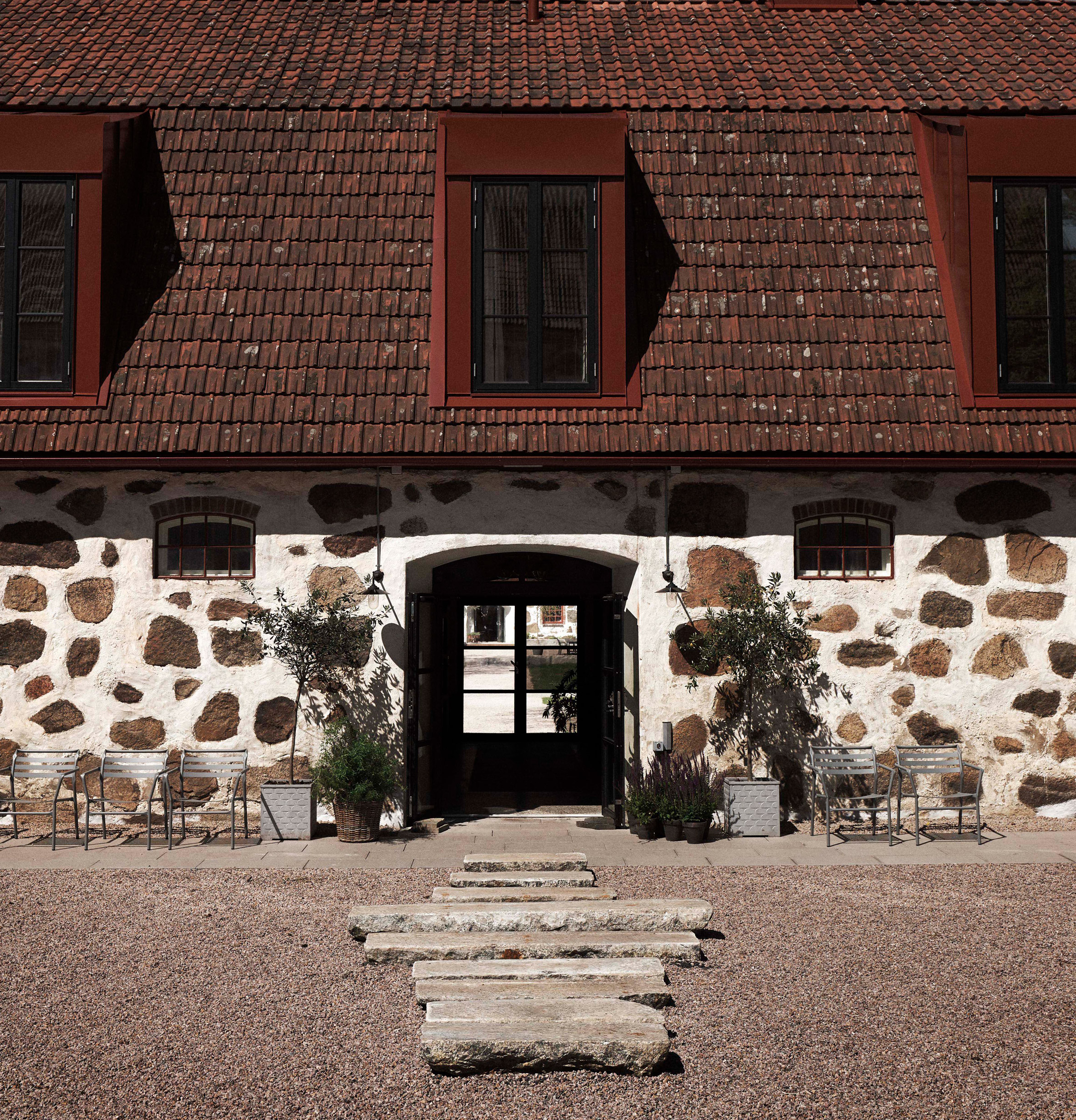
Elsewhere in Sweden, Note Design Studio recently completed the peach-coloured Grow Hotel in Stockholm, that also has a restaurant offering Japanese fusion food.
Images by Fredrika Stjärne.
The post Wanås hotel and restaurant opens in converted 18th-century cow barn and horse stable appeared first on Dezeen.
http://bit.ly/2YpEYh2
twitter.com/3novicesindia
No comments:
Post a Comment